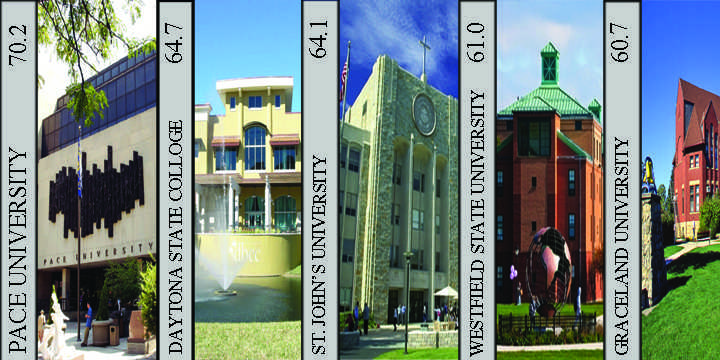The university’s online Bachelor’s degree program has been ranked #1 in the nation by U.S. News and World Report.
The ranking was based upon numerous factors, mainly consisting of faculty credentials and training, student services and technology, and the student engagement level. Within each of these criteria, there were more detailed requirements. For the student engagement criteria, scores were given based on graduation rates, assessments, class size, retention rates, time to degree deadline, and their practices. Before schools were ranked according to U.S. News and World Report’s scoring system, there were two steps required. Step one was to compile a list of all the schools that offer online programs for Bachelor’s Degrees, and step two was to actually collect the data from these schools.
The U.S. News and World Report sent surveys to 1,767 schools that offered online programs for Bachelor’s Degrees. In the initial survey, each school was asked if in the 2012-2013 academic year, they would be offering a Bachelor Degree online program through Internet-based distance education courses. Both the U.S. Department of Education and the U.S. News and World Report have a similar definition as to what constitutes a distance education program. The Department of Education mandates that an online program fulfill the following requirements stating, “A program for which all the required coursework for program completion is able to be completed via distance education courses that incorporate Internet-based learning technologies.”
“Distance education courses are courses that deliver instruction to students who are separated from the instructor and support regular and substantive interaction between the students and the instructor synchronously or asynchronously. Note: Requirements for coming to campus for orientation, testing or academic support services do not exclude a program from being classified as an online bachelor’s degree program.” Although there was a nonresponse bias with this survey as several schools never responded to the earlier questionnaire, 237 schools successfully completed step one and were then placed in the rankings based on their scores given from their faculty credentials and training, student services and technology, and student engagement. Each category consisted of several other requirements within it too. The maximum possible score for each of three main categories was 100. Then, the average of these three scores was used to determine the school’s ranking for the best online bachelor’s program. The university scored an 81.3 for the category of ‘Faculty Credentials & Training’, a 61.6 in ‘Student Services & Technology’, and finally, a 69.0 in ‘Student Engagement’. The average of these scores gave the university a total score of about 70.6.
Other schools that scored high in the U.S. News and World Report ranking system include Daytona State College in Florida, St. John’s University in Queens, Westfield State University in Massachusetts, and Graceland University of Iowa. New York was well represented in the “Top 5” of the Best Online Bachelor Programs of 2013. The university’s online program is relatively new, being first offered in the academic year of 2004-2005. The current total enrollment is 212 students, who are charged $535 per credit, or $680 per credit for Nursing majors. Students can earn a degree entirely online, even if they are not residents in the United States. Jennifer Dahmen, Assistant Director of Admissions of iPace, stated that, “iPace is very proud, but could not have achieved this success without the National Coalition for Telecommunications Education and Learning.”
The University and NACTEL have been working together on an online education program since 1998. Dahmen explains that NACTEL does about 90 percent of the work and iPace does about 10 percent, so NACTEL must undoubtedly be recognized for this achievement as well.
Even though the university was ranked #1, there is still room for improvement. Dahmen explained one improvement that the online program will be working on is flexibility. Dahmen said, “Our aim is to be as flexible as possible in order to service all those who have started their degree, but have not yet finished. Also, we are limited with the number of outside credits we can accept, and want to improve that as well.”
There are numerous courses offered each semester for those who want to take a course over the summer or winter to keep busy, are running behind in graduating in four years, simply enjoy online courses, or want to earn their degree through an online education.
During the Spring 2013 semester, there are 106 online courses offered ranging from classes needed to fill the core requirements to graduate in addition to several electives. These courses have a maximum class size of 20 in order to have a good student-teacher ratio and therefore, they close very quickly.
Kristina Grimmer, freshman, said, “I am very proud that Pace was ranked number one, but unfortunately, I do not plan to sign up for any online courses anytime soon because I like the teaching environment of the classroom too much.” For more information on learning how to get involved with a university online course, please visit http://www.pace.edu/online-learning/home.

